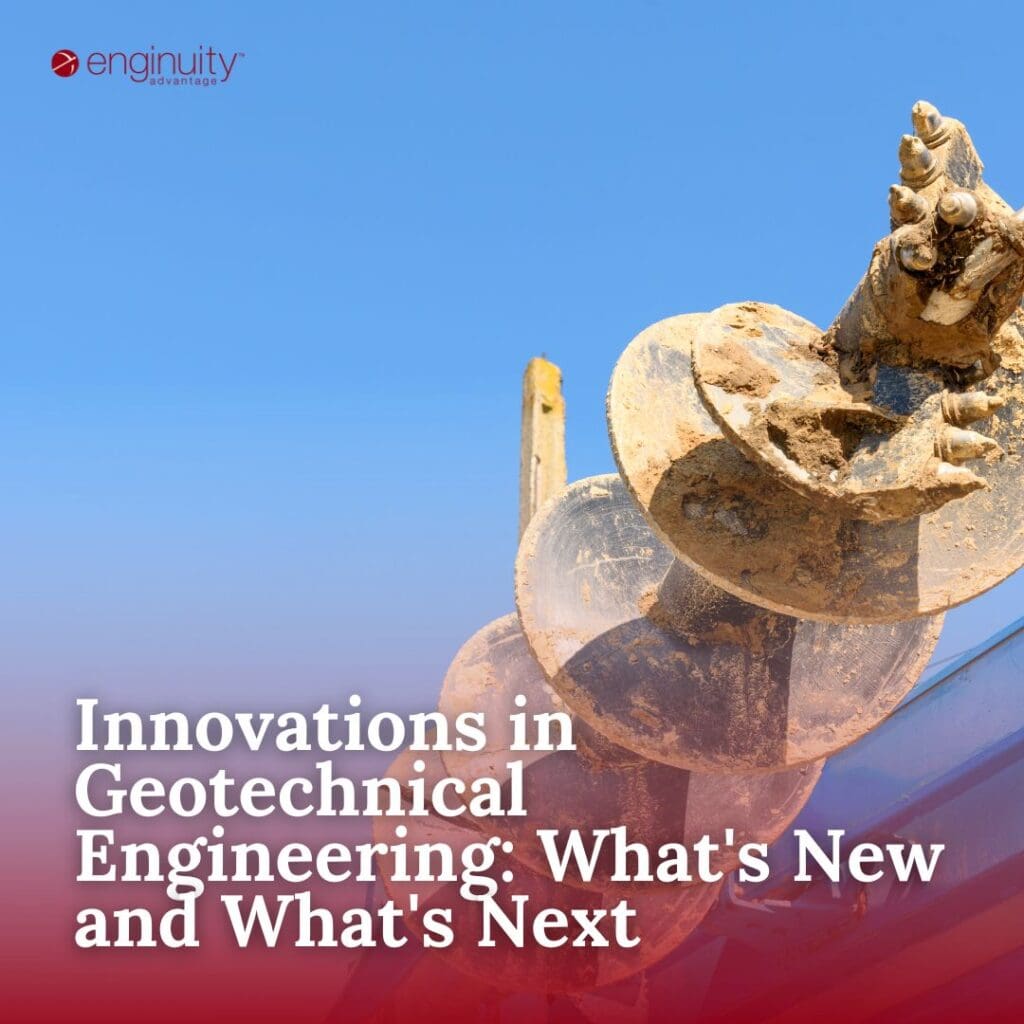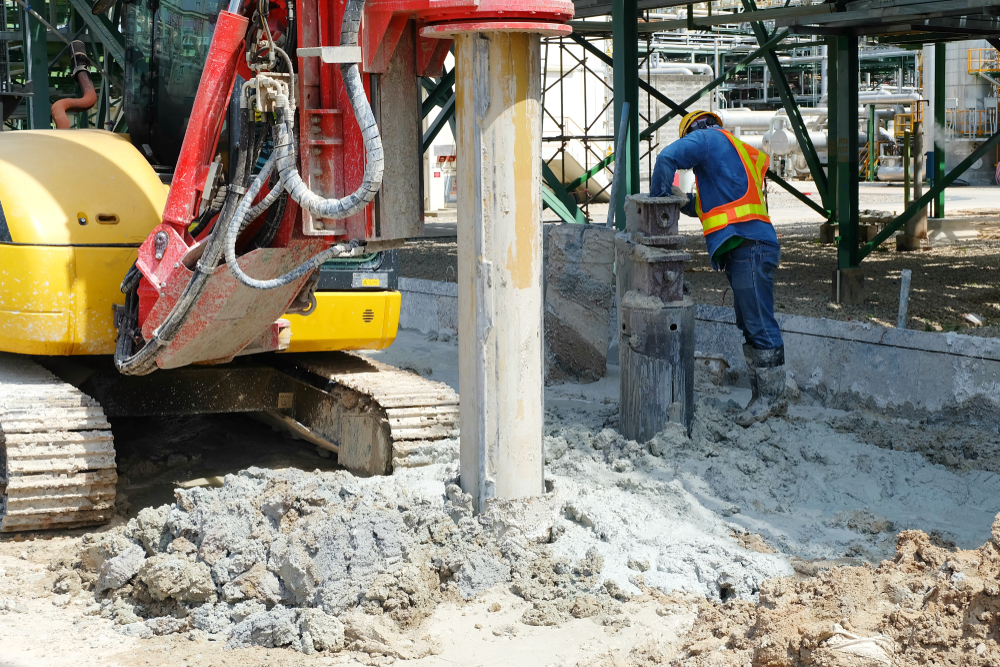How a Geotechnical Specialist Can Make Sure the Success of Your Structure Structures
How a Geotechnical Specialist Can Make Sure the Success of Your Structure Structures
Blog Article
Investigating the Interdisciplinary Nature of Geotechnical Engineering and Its Influence on Ground Renovation and Structure Design
By incorporating understandings from structural, environmental, and geological techniques, geotechnical engineers are geared up to address complex dirt habits and site-specific challenges. This collaborative strategy not just improves the efficiency of strategies such as soil stablizing and vibrant compaction yet likewise makes certain that jobs adhere to sustainability concepts.
Summary of Geotechnical Design
Geotechnical engineering is an essential branch of civil design that concentrates on the habits of planet materials and their communication with structures. This technique encompasses the research of rock, groundwater, and soil, intending to understand their residential properties and how they influence the performance of civil engineering jobs. Geotechnical designers examine the mechanical and hydraulic habits of these products to guarantee the security and safety of structures such as structures, bridges, and preserving wall surfaces.
The scope of geotechnical engineering includes site investigations, dirt sampling, and testing, in addition to evaluation of dirt technicians and rock mechanics. Engineers utilize sophisticated methods to review ground problems, recognize possible risks, and design effective ground enhancement services. This might involve methods such as dirt stablizing, grouting, and making use of geosynthetics, which boost the strength and durability of the ground.
In addition, geotechnical design plays an essential duty in structure style, establishing ideal structure kinds based upon soil qualities and packing conditions. By integrating extensive screening and analysis, geotechnical designers add dramatically to the sustainability and resilience of facilities, making sure that structures can endure functional and environmental tensions over time.
Secret Interdisciplinary Relationships

Furthermore, environmental design plays an important function in assessing the effect of geotechnical tasks on the bordering ecosystem. This partnership is crucial for developing lasting techniques that reduce ecological destruction during excavation or ground improvement processes.
In addition, the assimilation of geotechnical engineering with geology enhances the understanding of subsurface conditions, facilitating more precise website characterizations (geotechnical engineer description). This connection help in hazard analysis, particularly in locations susceptible to landslides or seismic task, thereby educating threat mitigation approaches
Last but not least, advancements in technology have actually caused interdisciplinary partnership with data scientific research and geoinformatics. These areas add to improved modeling and evaluation strategies, permitting a lot more accurate predictions of soil behavior under numerous problems. Hence, the interconnectedness of these disciplines enriches geotechnical engineering, promoting technology and efficiency in structure design and ground enhancement.
Ground Renovation Techniques
Ground enhancement strategies are crucial methods utilized to enhance the engineering residential properties of dirt, thus increasing its load-bearing capability and stability. These methods are particularly crucial in areas where all-natural dirt conditions are poor for sustaining structural lots or where ecological factors might compromise dirt stability.
Common ground enhancement approaches include dirt compaction, which increases density and decreases void spaces, and grouting, which includes infusing products right into dirt to fill up spaces and bind particles together - about geotechnical engineering. Other methods consist of the installment of dirt nails and anchors, which provide extra support, and the usage of geosynthetics to enhance dirt structures. Deep blending methods, such as soil-cement columns, can likewise dramatically enhance the strength and stiffness of weak dirts
Additionally, dynamic compaction and vibro-replacement techniques are commonly used to enhance soil buildings sitting. These approaches can mitigate issues connected to Going Here settlement and liquefaction, particularly in seismic areas. By employing a mix of these innovative techniques, geotechnical designers can properly address site-specific challenges, guaranteeing that the foundation systems will certainly execute adequately under anticipated loading problems, hence adding to overall job success.
Structure Style Considerations
Effective foundation style considerations are vital for the longevity and security of frameworks. A well-designed structure has to properly support the tons of the structure while suiting dirt conditions, environmental elements, and possible modifications in time. Key variables include dirt bearing capability, settlement features, and groundwater conditions.
Understanding the dirt account with geotechnical examinations is essential, as it educates the selection of structure type-- be it shallow, deep, or specialized approaches such as pile structures or mat foundations. The anticipated loads, consisting of real-time, dead, and environmental tons, must be precisely determined to guarantee the foundation can stand up to possible failing systems, such as moving, reversing, or excessive settlement.
Additionally, factors to consider for frost depth, seismic task, and possible soil liquefaction in seismic areas are critical. In addition, drain and dampness control need to be integrated into the foundation design to alleviate problems connected to hydrostatic pressure and dirt erosion.
Collaboration amongst architects, engineers, and geotechnical professionals is vital to create a comprehensive structure style that not just meets regulative demands but also makes certain the long-lasting efficiency and safety of the structure. Inevitably, extensive preparation and innovative options are required to address the intricacies inherent in structure design.
Study and Finest Practices

One significant study involves the use of deep dirt blending in a skyscraper structure job in a seismic zone. This method considerably boosted the dirt's toughness and stability, enabling a safer and more effective structure system (geotechnical engineer description). The project highlighted the relevance of choosing suitable ground improvement methods based on site-specific problems, including dirt type and loading demands
An additional example is the application of vibrant compaction for enhancing the bearing ability of weak soils below a commercial center. This method efficiently decreased settlement problems and improved overall website efficiency, showing the effectiveness of combining typical design methods with contemporary innovation.
Ideal practices originated from these study highlight the necessity of extensive website examinations, cooperation Recommended Site amongst multidisciplinary teams, and the consolidation of innovative modeling devices. By taking on these lessons, geotechnical engineers can enhance structure styles and ground renovation techniques, ultimately resulting in more secure and extra lasting construction results.
Conclusion
In conclusion, the interdisciplinary nature of geotechnical design considerably improves ground enhancement and foundation style. site here By integrating concepts from different design self-controls, customized techniques are developed to address specific difficulties connected to soil residential or commercial properties and ecological effects.
The scope of geotechnical engineering consists of website investigations, dirt sampling, and screening, as well as evaluation of soil auto mechanics and rock technicians. The partnership between geotechnical engineering and structural engineering is particularly critical, as the efficiency of frameworks is greatly influenced by soil actions and properties.Usual ground enhancement methods consist of dirt compaction, which boosts density and minimizes void spaces, and grouting, which includes infusing materials right into soil to fill spaces and bind particles with each other. Other methods consist of the installation of dirt nails and supports, which offer added support, and the usage of geosynthetics to strengthen dirt structures. A properly designed foundation must properly support the tons of the structure while suiting dirt problems, environmental elements, and possible adjustments over time.
Report this page